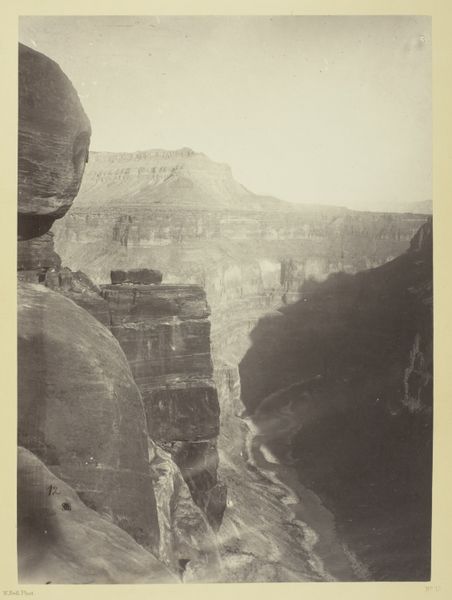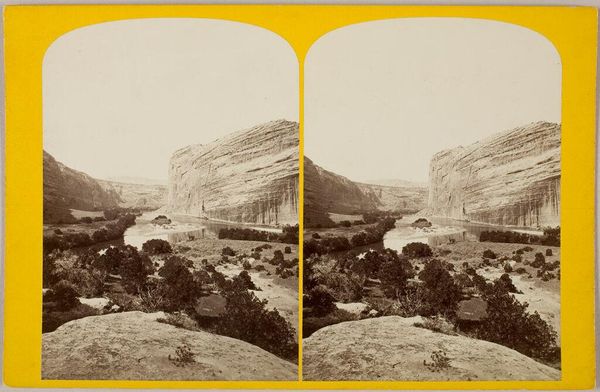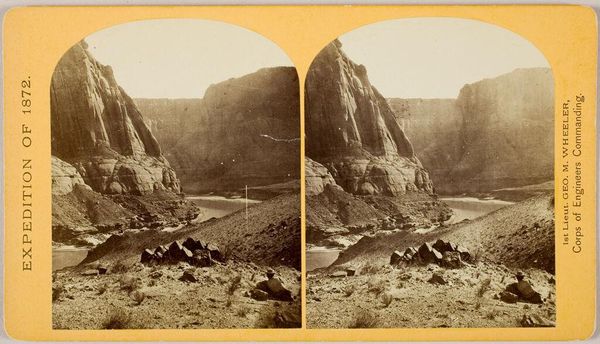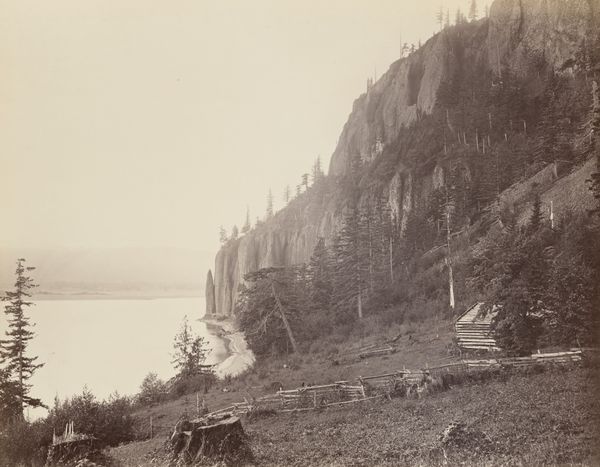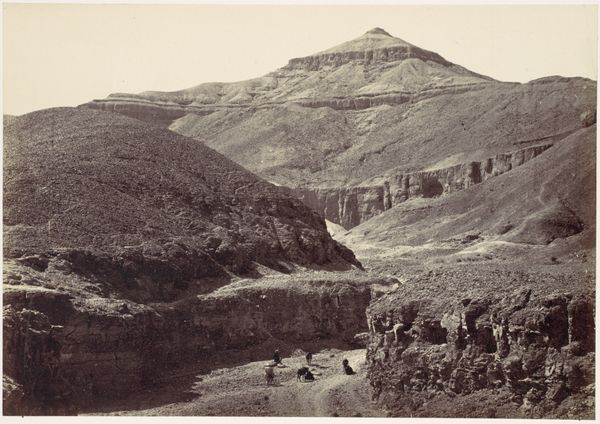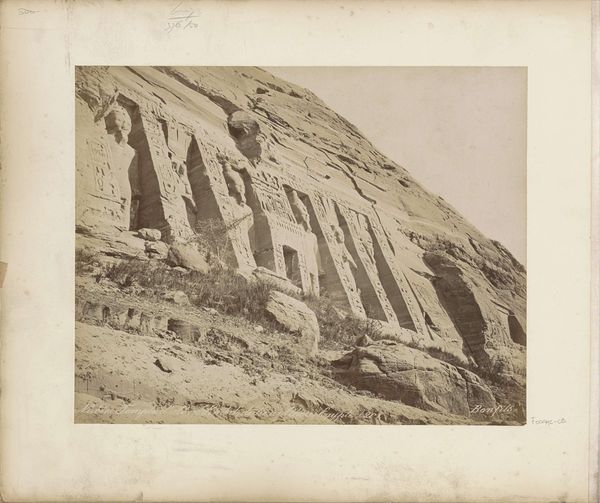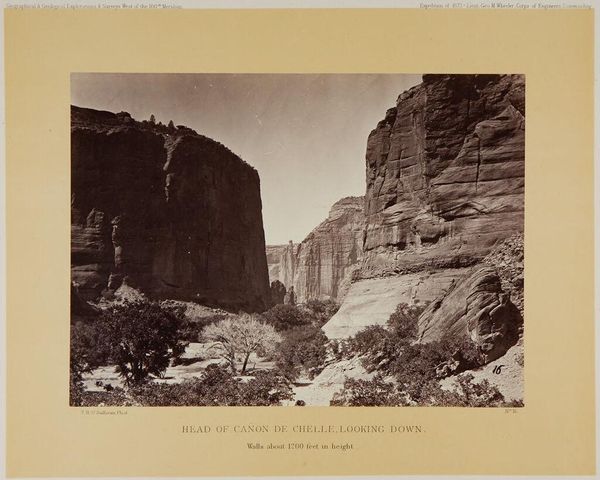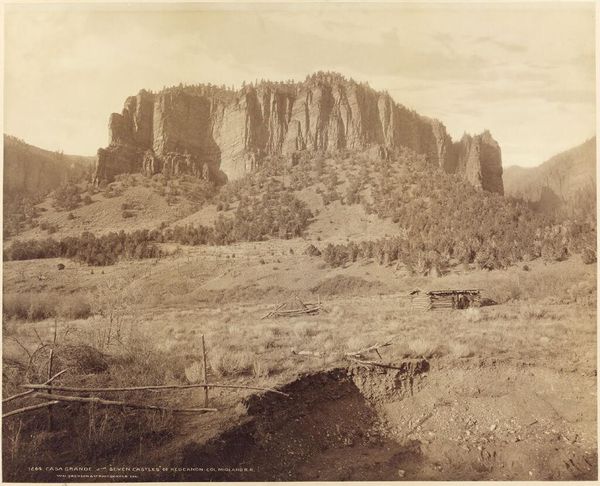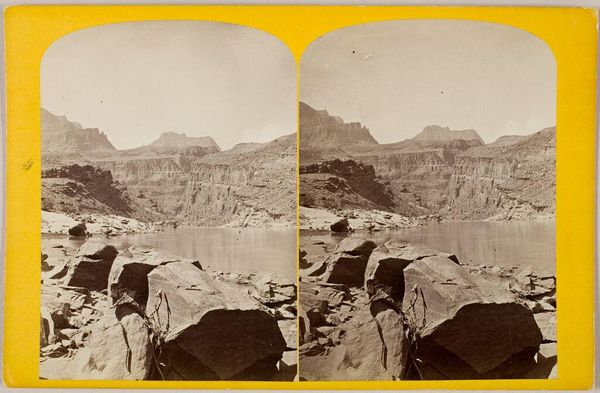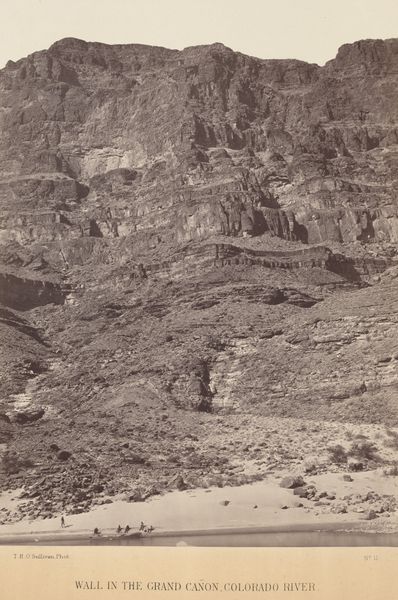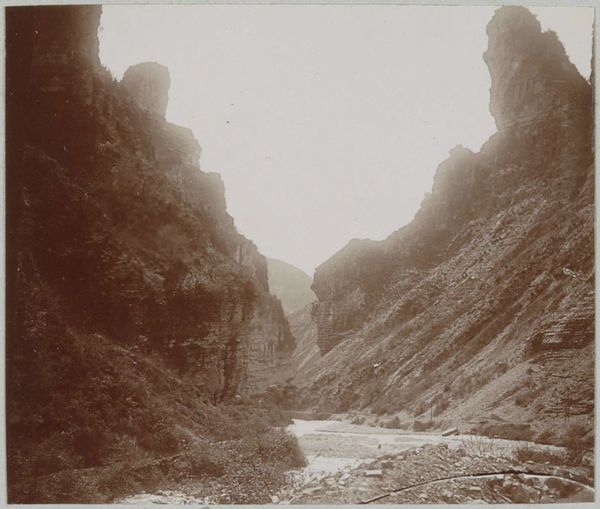
albumen-print, photography, albumen-print, architecture
#
albumen-print
#
landscape
#
photography
#
albumen-print
#
architecture
Dimensions: image/sheet: 25.5 × 33.5 cm (10 1/16 × 13 3/16 in.) mount: 40.7 × 50.8 cm (16 × 20 in.)
Copyright: National Gallery of Art: CC0 1.0
Curator: This is John K. Hillers’ albumen print, “Ruins of Cliff Dwellings, Canyon de Chelly,” taken sometime between 1879 and 1881. Editor: The stark contrast immediately conveys a sense of somber history. These ruins carved into the landscape feel so ancient. What was it like to stand there, taking this photo? Curator: I think that Hillers, as part of the U.S. Geological Survey, saw this as a record of a vanishing civilization, part of a broader project of mapping and understanding the American West for resource extraction and political control. Consider the materiality: the albumen print process, light-sensitive chemicals meticulously applied to paper, speaks to the scientific goals, the making of an indexical document. Editor: True, but these structures—look at how the dwellings mirror the texture of the rock face. Sheltered by that natural overhang. It reminds me of images of the Holy Family in caves; a very immediate association to refuge and permanence. And even in ruins, that idea resonates. Curator: That’s a good point about the visual echoing. The way these buildings are built directly out of—and within—the canyon walls also blurs lines between natural and man-made environments. The dwellings integrate into, are of the land, which in turn implies sustainability born of necessity, unlike typical colonial settlements… Editor: See how the light falls? On one hand, the deep shadow on the upper ruins suggests secrets, things hidden, but there's also that inviting band of light—illuminating the craftsmanship that went into the stones. They carry echoes of human hands shaping a community, a life that was here. Curator: Hillers was also part of a project dispossessing native communities; their histories weren't as important as controlling their land and resources. I see this document as fundamentally connected to this reality. Editor: Yes, the context is complex and the photo reveals tensions. Still, looking at it now, removed from the immediacy of the situation, it provides a window, not only into lost skills and social networks but a spiritual continuity... something more lasting, transcending those material constraints and struggles. Curator: Maybe... For me, the photograph functions as an artefact; revealing colonial influence alongside the narrative it seemingly represents of Indigenous life, frozen in time. I see less spirituality and more documentary. Editor: Perhaps it reveals something about us as well as the original dwellers: the pull to connect to something older than ourselves, to see signs of ingenuity even within ruins. Regardless, it's fascinating how a photograph can hold so much conflicting weight.
Comments
No comments
Be the first to comment and join the conversation on the ultimate creative platform.
